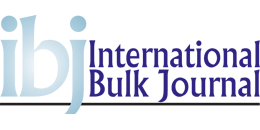


(Posted on 01/05/20)
After 100 days of VLSFO operation, LUKOIL Marine Lubricants is sharing recent experience on VLSFO operation with NAVIGO MCL Extra (40BN). This draws on learnings over the past few months as well as experience from the transition from HFO to distillate fuels in 2015 with NAVIGO MCL Ultra (20BN).
LUKOIL is the leading Russian company in oil exploration, production and refining, as well as marketing of petroleum products.
Using the right cylinder oil, such as NAVIGO MCL Extra with extra detergency, is only the first step to avoid excessive liner wear on VLSFO. Feed rate optimization is equally important for good engine condition, in combination with engine inspections and monitoring the wear metal content of drain oil samples. The feed rate optimization process involves Cylinder Scrapedown Analysis (CSA) at regular intervals, provided by LUKOIL as part of their OPTIMIZE program. The switch to VLSFO or between different VLSFO blends can still be challenging and requires careful attention.
The fuel that operators are switching from, the new fuel and how the transition is managed all play a major role in ensuring a smooth changeover. HFO is stable because it contains many polar hydrocarbons. Distillate fuels are non-polar and can cause instability in mixtures. Many ULSFO and VLSFO blends are such mixtures. When changing over from HFO to these fuels, the sludge, asphaltenes and cat fines which may have accumulated over time while on HFO can remain on the tank bottom and walls or in the fuel system unless these are fully cleaned or flushed as it was recommended before the transition to VLSFO.
This issue can be made worse because the ability of distillates, ULSFO and VLSFO to absorb cat fines and asphaltenes can cause them to be carried through to the filter, purifier and engine. Cat fine levels at the inlet to the main engine must be below 15 ppm, ideally below 8 ppm. Some ULSFO and VLSFO are treated with additives to improve their stability, but these further increase the fuel’s absorbance and must be handled with care.
Mixing fuels can cause problems due to incompatibilities which cannot be completely avoided. Measures to manage this risk include; segregating the fuel qualities, minimizing mixing and monitoring filter, purifier and engine condition. Engine monitoring includes, for example, regular inspections and adjusting the feed rate where necessary, as well as regular laboratory analysis of scrape down samples.
Some 100 BN cylinder oils, such as NAVIGO 100 MCL, offer improved detergency. Therefore, in some cases high BN cylinder oil is used for a short time to counteract deposits in the engine. In the long run, however, using excessive BN with VLSFO will lead to deposits in the piston top land and ring pack, which can ultimately lead to scuffing and, consequently, loss of liners and off-hire of the vessel. By contrast, NAVIGO MCL Extra has detergency comparable to a 100 BN cylinder oil but a lower alkalinity or neutralization capacity (BN). This keeps the engine free of deposits without the risks of excessive BN. A sufficient feed rate is required to prevent scuffing.
Columbia Group anticipates a period of strong expansion as an increasing number of international shipowners... Read more
Norse?Ship Management has expanded its use of Smart Ship Hub’s high frequency sensor data and... Read more
As the maritime industry gears up to welcome the IMO’s STCW bullying and harassment training amendments... Read more
NORDEN has acquired the cargo activities of Taylor Maritime in Southern Africa (previously operated... Read more
Philippos Ioulianou, Managing Director of EmissionLink, has warned the IMO’s decision to delay... Read more
VIKAND has highlighted the need for cultural change in the maritime sector as reports of bullying, harassment... Read more
The maritime industry is experiencing a period of significant transformation, driven by rapidly evolving... Read more
NorthStandard has advised Members of a 5% increase in P&I premiums for the marine insurance year... Read more
Anemoi Marine Technologies, the UK-based leading designer of Rotor Sails for wind-assisted ship propulsion... Read more
Helm Operations has announced that nine electronic record books within Helm CONNECT Logbook have been... Read more